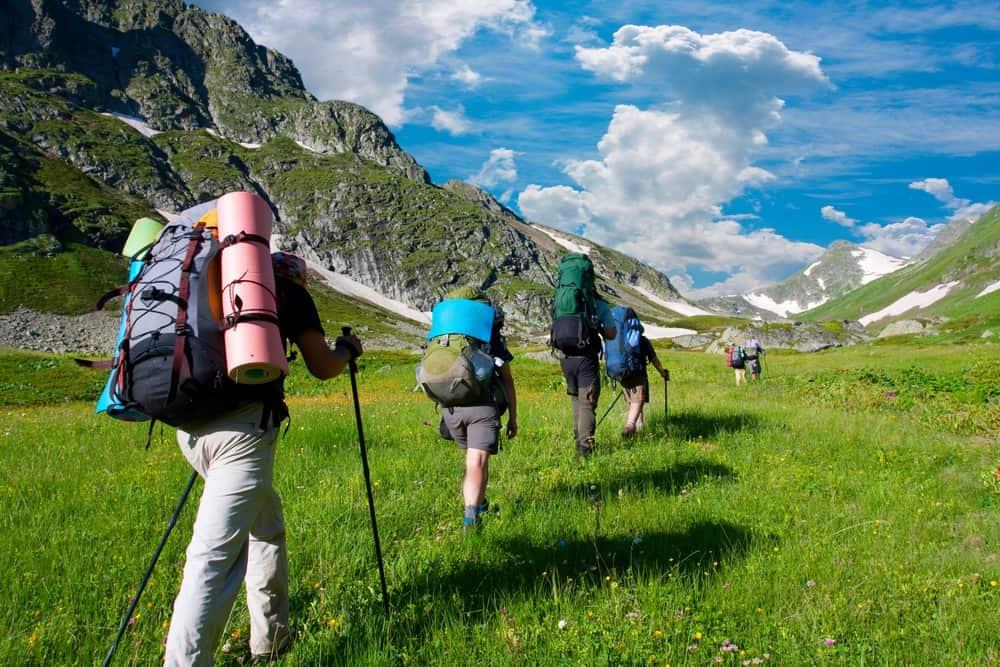Trekking in Ladakh: A Complete Guide

India is a land of diverse landscapes, and Trekking in Ladakh is one of the most exhilarating experiences for adventure seekers. Known as the “Land of High Passes,” Ladakh is blessed with rugged mountains, glacial rivers, Buddhist monasteries, and stark desert valleys. Trekking here is not just about adventure—it’s about immersing yourself in a unique blend of nature, spirituality, and culture. From short village hikes to challenging high‑altitude expeditions, Ladakh offers trails that test endurance while rewarding trekkers with breathtaking beauty.
🏔️ Why Trekking in Ladakh is Special
-
High‑Altitude Terrain: Most treks range between 3,000–6,000 meters, offering dramatic landscapes.
-
Cultural Richness: Trails pass through monasteries, villages, and nomadic settlements.
-
Adventure & Spirituality: Treks often lead to sacred lakes, passes, and Buddhist shrines.
-
Unique Geography: Cold desert climate, snow‑capped peaks, and barren valleys unlike anywhere else in India.
🏞️ Famous Treks in Ladakh
Markha Valley Trek
-
Highlights: Known as the “Tea House Trek” of Ladakh.
-
Experience: Trek through villages, monasteries, and high passes like Kongmaru La.
-
Best Time: June–September.
-
Difficulty: Moderate.
Chadar Trek
-
Highlights: A winter trek across the frozen Zanskar River.
-
Experience: Walk on ice sheets, camp in caves, and witness frozen waterfalls.
-
Best Time: January–February.
-
Difficulty: Challenging due to extreme cold.
Stok Kangri Trek
-
Highlights: Summit at 6,153 meters, one of the highest trekking peaks in India.
-
Experience: Requires acclimatization and technical skills.
-
Best Time: July–September.
-
Difficulty: Difficult.
Sham Valley Trek
-
Highlights: Known as the “Baby Trek” of Ladakh.
-
Experience: Short trek through villages, apricot orchards, and monasteries.
-
Best Time: Year‑round.
-
Difficulty: Easy.
Lamayuru to Alchi Trek
-
Highlights: Ancient monasteries and lunar landscapes.
-
Experience: Trek through passes like Wanla and explore Buddhist culture.
-
Best Time: June–September.
-
Difficulty: Moderate.
Snow Leopard Trek
-
Highlights: Wildlife trek in Hemis National Park.
-
Experience: Spot rare snow leopards, blue sheep, and Himalayan birds.
-
Best Time: November–March.
-
Difficulty: Moderate.
🌳 Offbeat Treks in Ladakh
-
Nubra Valley Trek: Cross Khardung La, one of the highest motorable passes.
-
Rumtse to Tso Moriri Trek: Trek through Changthang Plateau to reach the sacred lake.
-
Zanskar Valley Trek: Remote trek through rugged terrain and Buddhist villages.
-
Padum to Darcha Trek: Connects Ladakh with Himachal Pradesh.
🧭 Types of Treks in Ladakh
-
Beginner Treks: Sham Valley, Lamayuru–Alchi.
-
Moderate Treks: Markha Valley, Snow Leopard Trek.
-
Challenging Treks: Chadar, Stok Kangri, Rumtse–Tso Moriri.
🎭 Cultural and Spiritual Dimension
Trekking in Ladakh often intertwines with spirituality:
-
Monasteries: Hemis, Thiksey, Lamayuru, and Alchi.
-
Festivals: Hemis Festival with mask dances and rituals.
-
Sacred Lakes: Tso Moriri and Pangong Tso.
-
Local Villages: Homestays offer authentic Ladakhi hospitality.
🏨 Accommodation and Logistics
-
Camping: Common in high‑altitude treks.
-
Homestays: Popular in villages like Markha and Sham Valley.
-
Eco‑lodges: Growing trend in Leh and Nubra.
-
Permits: Required for restricted areas like Pangong, Nubra, and Tso Moriri.
📅 Best Time for Trekking in Ladakh
-
Summer (June–September): Ideal for most treks.
-
Winter (January–February): Best for Chadar Trek.
-
Spring/Autumn: Good for wildlife treks and cultural immersion.
✈️ Travel Tips
-
Acclimatize properly for high‑altitude treks.
-
Carry essentials: trekking shoes, layered clothing, first‑aid kit.
-
Respect local customs and avoid littering.
-
Book with certified trekking organizations for safety.
📈 Trekking and Tourism Economy
-
Supports local guides, porters, and homestays.
-
Promotes eco‑tourism and conservation.
-
Generates employment in hospitality and transport sectors.
-
Encourages sustainable practices like “Leave No Trace.”
📝 Conclusion
Trekking in Ladakh is more than an adventure—it’s a journey through diverse landscapes, cultures, and spiritual traditions. From the frozen rivers of Zanskar to the flower‑filled valleys of Sham, from beginner trails near Lamayuru to challenging expeditions across Stok Kangri, Ladakh offers treks that transform lives. Whether you’re a beginner or a seasoned mountaineer, trekking here promises unforgettable experiences and a deeper connection with nature.


